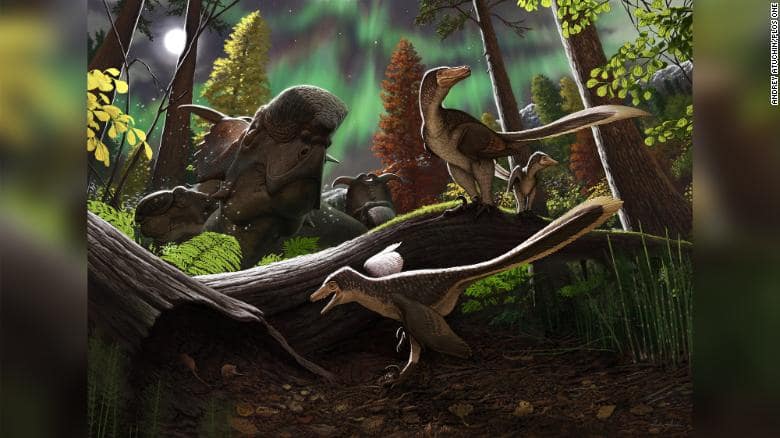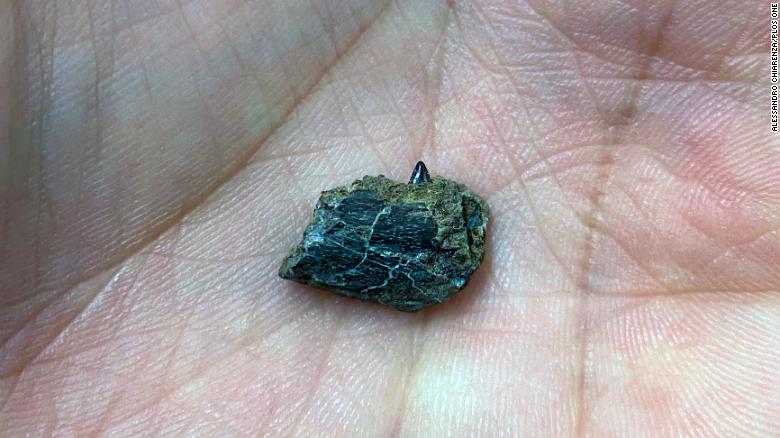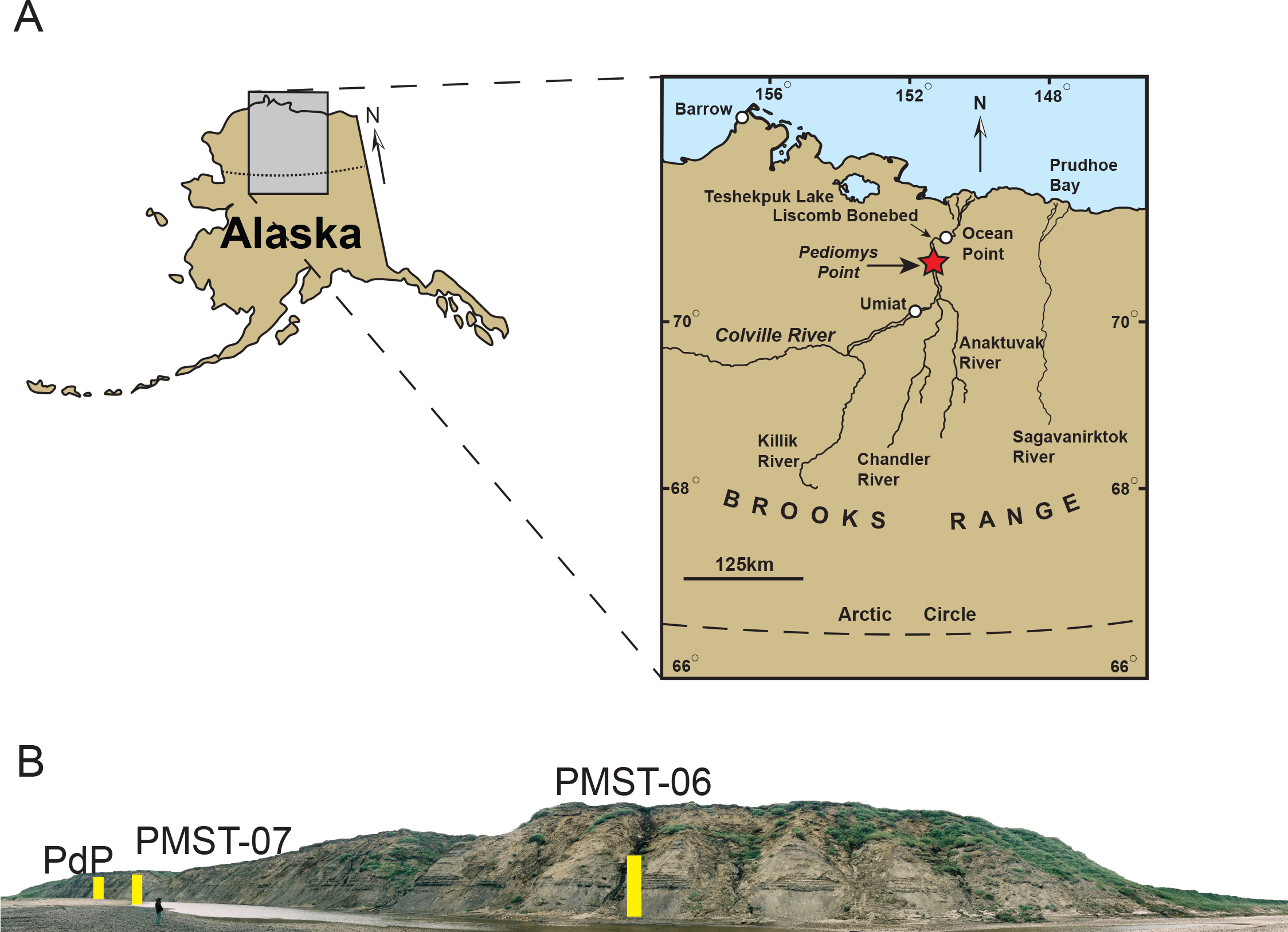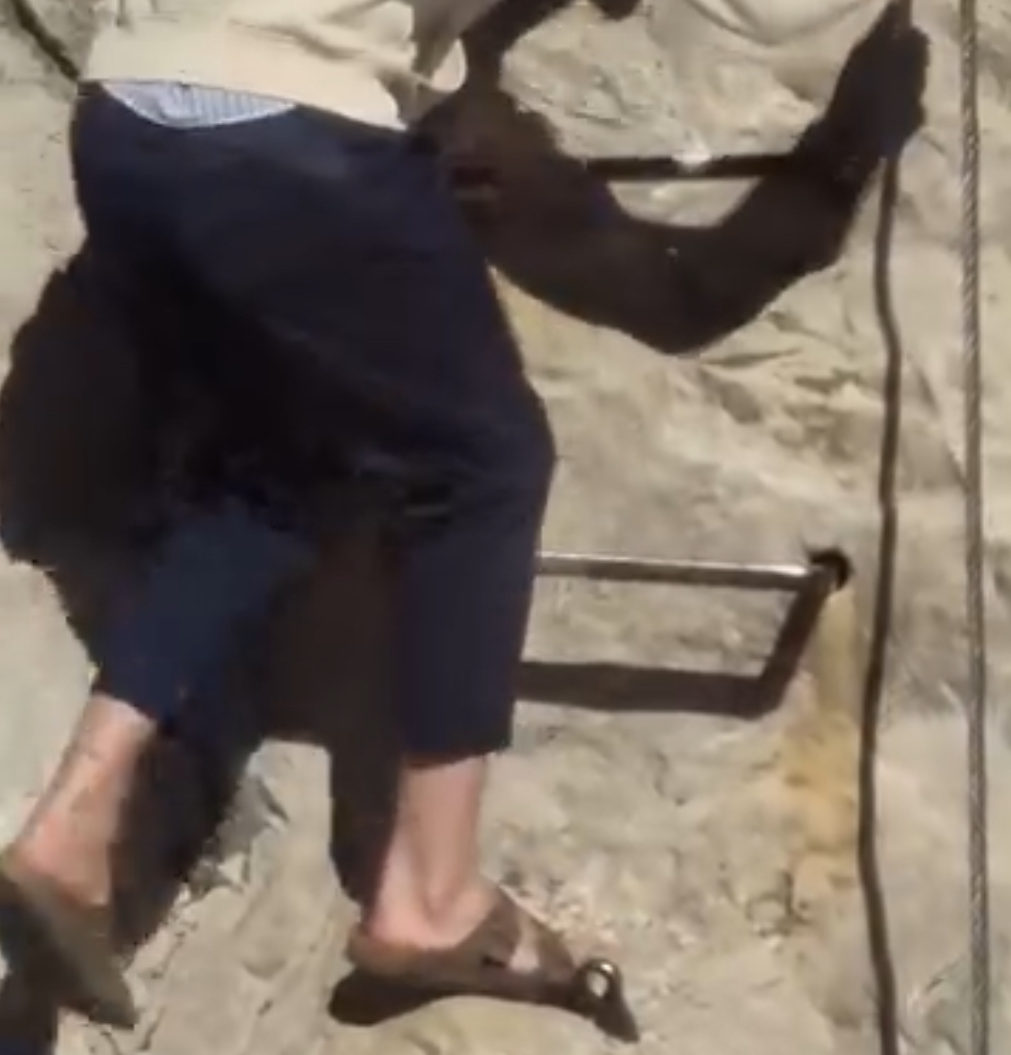
A new species of raptor has been identified by paleontologists in the Arctic region of Alaska. This newly discovered type of dromaeosaurid, a predatory bird-like dinosaur, is related to Velociraptors and lived approximately 70 million years ago. The fossil is the tip of a jaw bone with a tooth measuring just 0.55 inches (14 millimeters). Adult raptors most likely ranged from 6 to 9 feet in length.
“What is extraordinary about this finding is that not only bones from carnivorous dinosaurs are rarely found in these sites, but discovering one from a very young individual, which can easily get broken up, destroyed and then not entering the fossil record is like finding a needle in the haystack,”
– Alessandro Chiarenza, lead author, and paleontologist at University College London.

These dinosaurs were previously thought to have migrated through the Arctic, but not live there. Since the fossil belongs to a juvenile, it is likely that the creatures lived in the Arctic because the dinosaurs would be too young to migrate. While the difference between migrating through the Arctic and living there may seem small it is quite significant. The Arctic was much warmer 70 million years ago with summers having a similar climate to Seattle. However, winters still reached 14º F (-10º C). According to the lead paleontologist, this means that the dinosaurs must have had more of a bird-like metabolism than previously thought.





